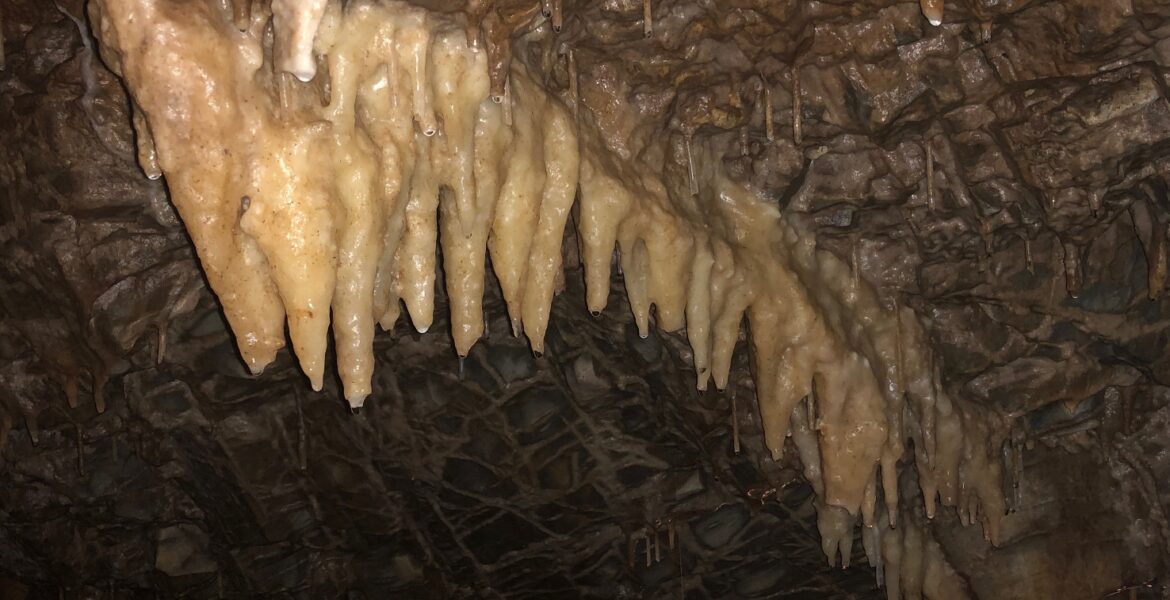The Kapsia Cave has been classified by experts as one of the 10 most remarkable caves in Greece, and as one of the most magnificent caves with stalactites and stalagmites in Southern Europe.
![]()
The cave is of significant importance for the studies of speleology and geology, but also for historians and archaeologists, as it is famous not only because of its natural beauty but also because of the numerous findings that were discovered inside it.
Located 15 km away from the city of Tripoli and next to the village of Kapsia – after which it is named – the cave has a long history that goes back to the 4th and 5th centuries BC. Human and animal remains, as well as objects created by people in ancient times, have been found inside it, proving that the cave was once inhabited.
The Kapsia Cave is situated in the periphery of the closed geological basin of the Mantinean plateau and it is linked to a complex system of natural sinkholes, that are all connected to a large aquifer network of caves.

The cave was discovered in 1887 by French archaeologist Gustave Fougères, who at the time was conducting excavations for ancient artefacts in the wider area of Mantineia.
However, the first proper excavation of the cave started a few years later, on August 20, 1892, by a Greek-French delegation, headed by an Arcadian engineer, Nikolaos Sideridis, and two French engineers. Sideridis and his team recorded the whole excavation process and published their findings in the French scientific journal Spelunga in 1911, which brought the Kapsia Cave to world fame. That publication was the most important Greek speleological study at the time and awakened the interest in speleology (the study of caves) in Greece.
Speleology and geology were developed quickly in Greece with lots of interest from international scientists, who travelled to Greece to take part in excavations. The plans to further search in underground caves, as well as the Kapsia Cave, were abruptly stopped, however, because of the two World Wars, and started again a few decades later.

In 1974, a new Greek-French mission was carried out, under the responsibility of Greek speleologist Ioannou, and a new large part of the cave was discovered, which was unknown to the first researchers.
Traces of an old flood and a multitude of fragments of human and animal bones and skulls were found inside the cave, all covered with mud, which was about half a meter thick and covered the entire floor of the cave. Additionally, lamps, tools and talismans (charms) were found inside the cave, which proves that people lived there for some time until the cave was flooded, and they drowned.
The biggest room within the cave has been called the “Hall of Miracles” by geologists because it presents the rarest colours of stone material from any other known Greek cave. Fire red, ocher yellow and green-blue shades, mixed with the off-white of the stalactites, offer a unique spectacle of natural art.
Stalactites can be seen on the roof of every room within the cave, and while some are cylinders or triangles, others have the shape of a jellyfish and some others hang like curtains. Red predominates in most areas in the cave, due to the large concentration of magnesium metals and iron, and where yellow predominates, it is due to the sulphur contained in calcium carbonate.

In November 2020, decades after its discovery, the Kapsia Cave attracted the attention of the speleology community again, when a team of speleologists from Argolida and Korinthia in Greece, found a large path within the cave that connects it to another large cave in Argolida, Cave Tousi. Human bones and various objects were also found in this latest excavation, belonging to the Neolithic and Hellenistic years (4th – 6th BC).
The team of speleologists are currently mapping the connection of the two caves, to see the length of the cave system, which is expected to be several kilometres long.

The Speleology Team of Argolida said in a recent announcement: “The Kapsia Cave is a book that records important geological and historical events. A big flood has left certified traces inside it and killed the residents of the cave. After years of work, we brought to light from the depths of the earth, lamps, tools, bone fragments, all of which tell the story of survival.”
“From the moment it was discovered, it became clear that this cave is a laboratory of the earth and the refuge of early men. In this cave of endless beauty, human bones and everyday clay utensils were found. The history of the earth and the history of man are intertwined in a magical whole in Kapsia,” the statement read.

The Kapsia Cave is open daily for visitors who wish to take a guided tour inside it, which lasts for about an hour. For more information visit: Σπήλαιο Κάψια - Κάψια Αρκαδίας (spilaiokapsia.gr)

Head of an ancient statue found just metres under the ground in Athens


